Swai fish and catfish are two types of fish that are often compared due to their similar appearance and taste. However, they are different species of fish with distinct characteristics.
When it comes to seafood choices, swai fish and catfish often find their way onto dinner tables due to their affordability and mild flavors.
But how do these two popular options stack up against each other?
Today we will compare Swai fish vs Catfish.
Have you ever wondered if there were reasons to avoid Swai fish?
or perhaps wanted to know if there were similar alternatives to swai fish?
Or yet still if you may have been a bit confused, wondering if swai fish and catfish are the same.
We answer all these questions and many more!
In this comprehensive comparison article, we’ll delve into the world of swai fish and catfish, exploring their nutritional profiles, culinary uses, environmental impact, preferred cooking methods, and health benefits.
And if you would like to get your hands “dirty” (in a good way though), we give you some exciting recipes to play with, so you experience the delicious tastes offered by these very popular fishes.
So, whether you’re a seafood enthusiast looking to expand your culinary horizons or a health-conscious consumer making informed dietary choices, join us as we explore the key differences and similarities between swai fish and catfish.
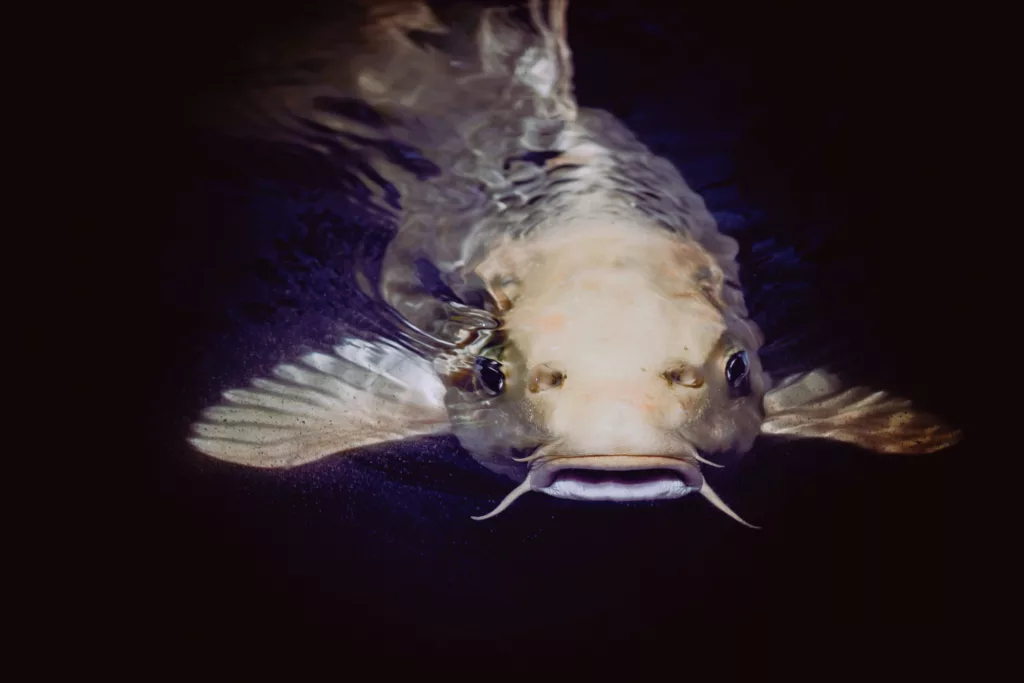

Table of Contents
Background History
Swai fish and catfish have a rich history as dietary staples in various cultures around the world.
Swai, scientifically known as Pangasius hypophthalmus, originates from Southeast Asia, particularly Vietnam.
Catfish, on the other hand, includes various species and is native to North America, with the channel catfish being the most common choice for consumption. Both fish types have found their way into international cuisines, making them accessible options for diverse culinary creations.
Here is a brief history of catfish introduction and use in the USA compared to swai fish:
History & Origin of Swai Fish
- Swai fish is a type of freshwater catfish native to Southeast Asia, particularly Vietnam.
- Swai fish was introduced to the United States in the early 2000s and has since gained popularity due to its mild taste, affordability, and versatility in cooking methods.
- Swai fish is commonly imported to the US from Vietnam, where it is extensively farmed.
- Swai fish is often used in restaurants across the United States and is enjoyed by many individuals.
Until 2003, Swai fish was considered a catfish. Which it obviously isn’t— despite the similarities they are both different types of fishes.
In 2003 the US Food and Drug Administration made it illegal to sell any fish other than the ones from the family of Ictaluridae, under the name of catfish.
This meant Vietnamese catfish could no longer be sold as catfish, as it doesn’t belong to the Ictaluridae family.
It belongs to the Pangasiidae family – so people now started addressing it with other names.
Striped Basa, panga, pangasius, Vietnamese catfish, tra, siamese shark, iridescent shark, cream dory were some of the names given to Swai fish over the years.
Until the more common and popularly used term, Swai fish was introduced in the market.
History & Origin of Catfish
Catfish is native to North American rivers and has been a popular food source for centuries.
- In the early 20th century, catfish farming began in the United States, and it has since become a significant industry.
- Today, catfish is among the top 10 fish consumed in the United States.
- Catfish is commonly used in Southern cuisine, such as in dishes like fried catfish and catfish gumbo.
In conclusion, while catfish has been a popular food source in the United States for centuries, swai fish is a relatively new addition to the American diet. Both types of fish have their unique characteristics and are enjoyed by many individuals. However, it is essential to be aware of potential concerns regarding the presence of heavy metals, such as mercury, in both catfish and swai fish[4][5].
Nutritional Comparison: Swai Fish vs Catfish
Swai fish nutrients:
A standard serving of Swai fish, around 4 oz or 113 gms contains, 15 grams of protein, along with 11 mg of omega-3 fats and 0 carbs.
This nutrient information suggests that Swai fish is a moderately nutritious fish. There are plenty of other fishes that are far richer in nutrients.
Other beneficial nutrients include selenium, vitamin B12 and niacin.
Catfish nutrients:
The same amount of catfish- 4oz or 113 gms, includes similar amounts of protein, around 15 grams. Catfish is highly rich in omega-3 fats, making it a crowd favourite. It has up to 100 to 250 mg of omega-3 fats and low carbs.
Nutrient Comparison between Swai fish and Catfish:
While Swai fish is rich in selenium, vitamin B -12 and Niacin, catfish is rich in omega-3 fats. A common variety or catch of 20 has up to 250 mg of omega fats. Which is almost 20x times the amount present in swai fish. They both have approximately the same amounts of Protein, which alone is up to 30% of the daily protein intake.
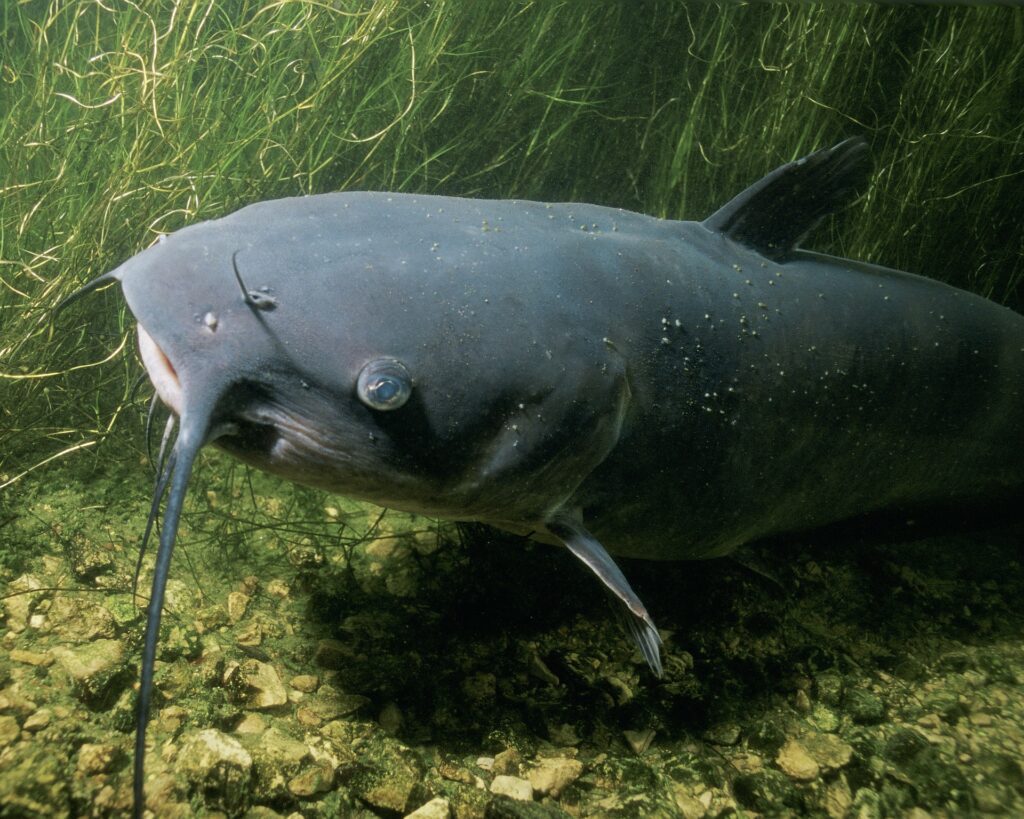

Here’s a detailed nutritional comparison between swai fish and catfish, including a breakdown of their nutritional content, calories, protein, fat, carbohydrates, vitamins, and mineral contents:
Table 1.0: Swai Fish and Catfish Nutrients Comparison Table
| Attributes | Swai Fish | Catfish |
|---|---|---|
| Calories | Approximately 105 calories per 3.5 oz (100g) serving | Approximately 105 calories per 3.5 oz (100g) serving |
| Protein | Around 15 grams per serving | Around 20 grams per serving |
| Fat | Roughly 4 grams per serving | Roughly 5 grams per serving. |
| Carbohydrates | Negligible carbs, less than 1 gram per serving | Minimal carbohydrates, less than 1 gram per serving |
| Vitamins | Good source of B vitamins, especially B12 and B6 | Contains B vitamins, particularly B12 and niacin |
| Minerals | Contains selenium, phosphorus, and potassium | Rich in phosphorus and selenium |
Table 1.0: Swai Fish and Catfish Nutrients Comparison Table
Significant Differences:
The Table 2.0 below highlights the distinguishing differences between the two types of fishes.
Table 2.0: Distinguishing Differences between Swai Fish and Catfish
| Attributes | Differences |
|---|---|
| Protein | Catfish generally has a slightly higher protein content compared to swai fish. Protein is essential for muscle repair and growth, making catfish a preferred choice for those seeking higher protein intake. |
| Fat | Both fish types have similar fat content, with catfish having a slightly higher fat content. However, the fat content in both fish is considered relatively low and heart-healthy |
| Vitamins | Swai fish and catfish are both good sources of B vitamins, especially B12. B vitamins play crucial roles in energy metabolism, nervous system function, and red blood cell production. |
| Minerals | Both fish provide essential minerals like selenium and phosphorus. Selenium acts as an antioxidant, while phosphorus is important for bone health and various cellular processes. |
Table 2.0: Distinguishing Difference between Swai Fish and Catfish
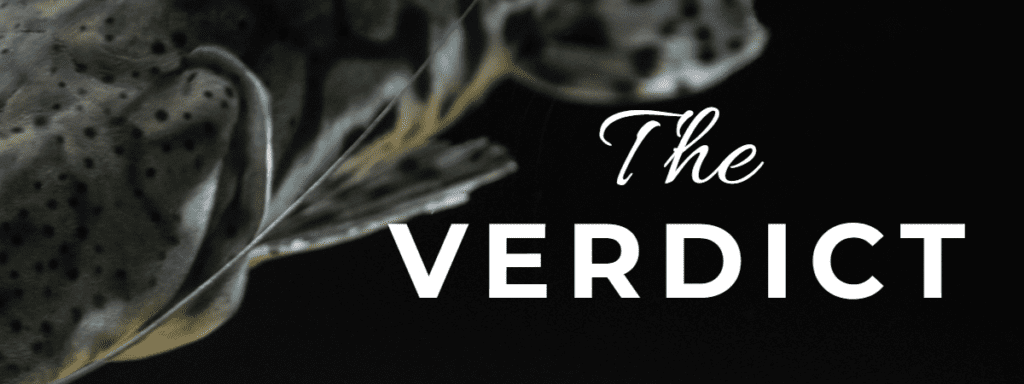







VERDICT: It’s important to note that nutritional values can vary based on factors such as the fish’s origin, preparation method, and overall diet. Both swai fish and catfish offer lean protein and a range of vitamins and minerals that contribute to a balanced diet. When making dietary choices, consider factors beyond just nutritional content, such as taste preferences, culinary versatility, and environmental impact.
Swai Fish Vs Catfish Taste and Texture
The next attributes to compare are their taste and texture.
My guess is that it is for their taste must be one of the major reasons people consume them.
I hope you are not an exception.
The table below gives a detailed comparison of the taste and texture differences between swai fish and catfish.
We will consider their flavor, tenderness, flakiness, and overall culinary experience.
We will also give you some example recipes where one fish’s attribute may be preferred over the other.
Table 3.0: Taste and Texture Differences: Swai Fish vs Catfish
| Taste & Texture Attributes | Swai Fish | Catfish |
|---|---|---|
| Flavor | Swai fish is known for its mild and neutral flavor. It has a subtle taste that is not overpowering, making it a versatile option for various culinary preparations | Catfish has a slightly stronger flavor compared to swai fish. It's often described as having a slightly earthy, slightly sweet, and somewhat mild taste |
| Tenderness | Swai fish is relatively tender, making it suitable for a variety of cooking methods. Its tenderness allows it to easily absorb marinades and seasonings, enhancing its overall flavor | Catfish tends to be firmer and has a slightly denser texture compared to swai fish. Its firmness makes it suitable for grilling, baking, or frying without falling apart |
| Flakiness | Swai fish is moderately flaky, with the flesh breaking apart into distinct flakes when cooked. Its flakiness makes it ideal for dishes where a delicate texture is desired | Catfish is less flaky compared to swai fish. It holds its shape well during cooking, making it suitable for recipes that require the fish to retain its form |
| Overall Culinary Experience | Swai fish's mild flavor and tenderness make it an excellent canvas for various flavor profiles. It's often used in dishes that incorporate bold seasonings, sauces, and spices to enhance its taste. | Catfish's slightly stronger flavor and firmer texture lend themselves well to both subtle and robust seasonings. Its texture allows it to hold up to grilling and frying methods |
| Recipe Examples | Swai Fish Recipe for Flavor Enhancement: Lemon Herb Grilled Swai: Marinate swai fish fillets in a mixture of lemon juice, olive oil, minced garlic, and fresh herbs. Grill until tender and serve with a lemon butter sauce. The mild flavor of swai fish pairs well with the bright citrus and herbaceous notes of the marinade. | Catfish Recipe for Texture and Flakiness: Southern Fried Catfish: Coat catfish fillets in a seasoned cornmeal breading and deep-fry until golden brown and crispy. The firm texture of catfish holds up well to frying, creating a satisfying crunchy exterior while maintaining its moist interior. |
Table 3.0: Taste and Texture Differences: Swai Fish vs Catfish








VERDICT: In summary, the choice between swai fish and catfish often comes down to personal preference and the culinary experience you’re seeking. Swai fish’s mildness and tenderness make it adaptable to various flavors, while catfish’s slightly stronger flavor and firmness make it versatile for both delicate and hearty preparations.
Culinary Uses & Cooking Methods
While these fishes are primarily selected for their taste, the reality is that the taste we get if usually a function of how they were cooked or prepared.
Let’s explore the culinary uses and cooking methods of both swai fish and catfish from a unique angle that highlights their versatility and cultural significance:
Culinary Uses and Cooking Methods: Swai Fish and Catfish
Swai Fish: Culinary Chameleon
Swai fish, often referred to as the “culinary chameleon,” possesses a remarkable ability to adapt to a diverse range of culinary styles and techniques.
Its mild flavor and tender texture make it a favorite canvas for chefs and home cooks alike.
From delicate herb-infused dishes to bold and spicy creations, swai fish effortlessly takes on various flavors and cooking methods.
Popular Cooking Methods for Swai Fish:
- Grilling: Grilling swai fish allows its natural flavors to shine while adding a subtle smokiness. Marinate swai fillets in citrus-based marinades or herb-infused oils to enhance its taste profile. The grill’s searing heat creates tantalizing grill marks and imparts a hint of smokiness, elevating the overall experience.
- Baking: Baking swai fish is a fuss-free method that preserves its delicate texture. Create parchment paper parcels with swai fillets, vegetables, and seasonings for an easy and healthy one-packet meal. The gentle heat of the oven ensures even cooking and prevents the fish from becoming overcooked.
- Frying: Lightly breaded and pan-fried swai fillets offer a crispy outer layer that contrasts beautifully with the tender fish inside. A quick pan-fry seals in moisture and creates a delightful crunch, making it a family-friendly option loved by all ages.
Catfish: Southern Comfort
Catfish, often associated with Southern comfort food, boasts a distinctive flavor and a firm texture that lends itself to heartier preparations. It has earned its place in the culinary traditions of the American South, where it’s cherished for its versatility in both casual and upscale dining settings.
Popular Cooking Methods for Catfish:
- Frying: Catfish’s firm texture makes it an ideal candidate for deep-frying. Crispy Southern fried catfish, coated in a seasoned cornmeal crust, is a beloved dish that embodies comfort and flavor. The frying process creates a delightful contrast between the crunchy coating and the succulent fish.
- Grilling: Grilled catfish showcases its rich flavor with a smoky twist. Marinate catfish fillets in a blend of smoky spices and herbs, then grill them over an open flame. The grill’s heat imparts a charred essence that complements catfish’s earthy notes.
- Stews and Soups: Catfish lends itself wonderfully to hearty stews and soups, absorbing flavors and infusing them into the dish. In traditional Southern gumbo or Cajun étouffée, catfish adds depth and heartiness, creating a satisfying comfort food experience.
Impact of Fish Choice on Cooking:
The choice between swai fish and catfish significantly influences the cooking process and final dish. Swai fish’s tenderness and mild flavor make it a versatile option for delicate preparations and bold flavor experimentation. On the other hand, catfish’s firmer texture and slightly stronger taste make it an excellent contender for hearty Southern-style comfort dishes that emphasize richness and depth of flavor.








VERDICT: In the culinary world, swai fish and catfish play distinct roles, offering endless opportunities to create dishes that cater to various palates and preferences. Whether you’re seeking the blank canvas of swai fish or the robust nature of catfish, both options provide a delightful culinary journey through flavors, cultures, and traditions.
Environmental and Sustainability Factors
Here is how environmental and sustainability factors impact swai fish and catfish farming.
Sustainability, better farming practices, and concerns by consumer are now also shaping demand for both fishes as the impact of these factors on both fishes vary greatly
So how are these factors influencing the consumer’s choice between both types of fish?
Here are the detailed Environmental and Sustainability Factors in Farming Swai Fish and Catfish
Swai Fish Farming:
Swai fish, primarily sourced from Southeast Asia, has faced scrutiny due to concerns related to environmental and sustainability issues associated with its farming practices. Some of the key factors include:
- Water Quality and Pollution: Intensive swai fish farming in certain regions can lead to water pollution due to waste accumulation and the use of chemicals. This can have negative effects on local ecosystems and biodiversity.
- Feed Conversion Efficiency: Swai fish often require substantial amounts of fishmeal and fish oil in their diets, contributing to overfishing of smaller fish species and placing pressure on marine ecosystems.
- Aquaculture Practices: In some cases, swai fish farms have been criticized for suboptimal aquaculture practices, including improper waste management, disease control, and use of antibiotics.
Here are more details about swai fish farming practices:
Potential Reasons to avoid Swai fish:
Swai fish is often fed rotten feed and kept in undesirable water conditions.
Below are some of the top 5 practices regarding Swai fish you should be aware of especially if you have concerns and evaluating healthier options of fish like Catfish:
#1: Bacterial Contamination:
Swai fish is prone to immense bacterial growth. Researchers over the years have found the presence of bacteria like E.coli and Vibrio Bacteria, medically termed as Vibrio spp. This bacteria in particular is known to cause shellfish poisoning and can be hazardous if the Swai fish is consumed raw or undercooked.
#2: Illegal Practices In Fish Farming:
Swai fish is popularly farmed in Vietnam, in the polluted waters of the Mekong River. Which also happens to be one of the world’s most polluted water bodies.
But how do the fish survive in such conditions?
Pangasius or Swai fish naturally have the tendency to thrive well even in nasty water conditions, unlike other freshwater fishes.
They are thrivers. They feed on whatever food is available. The farmers use this to their advantage and make extra profits by often feeding the fish with rotten foods that aren’t advisable.
But little do they know that you are what you eat.
Swai fish is made to feed on Rice bran, along with soybean and canola, none of which are healthy diet options for fish. The soy and canola products are commonly genetically modified, which is a controversial practice.
Now if this isn’t harmful to the fish, I don’t know what is.
Also, these hormones travel through their bodies to the consumers, with the potential to create havoc, especially on reproductive systems.
Not only this, Swai fish are farmed in overpopulated and crowded environments, which affect their health and growth. They are then administered high doses of hormones to make them achieve maturity faster, at less than half the usual time. Overcrowded ponds also cause the fish to go under stress and result in diseases.
You may also like: Top 5 Health Benefits of Smoked Catfish


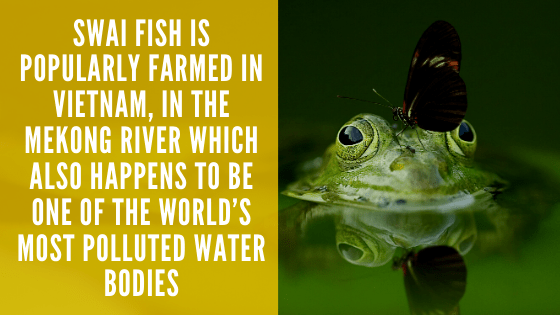

#3: Use of Heavy Antibiotics:
Due to the sleazy conditions, the fish are kept in, diseases are common. For which administration of heavy antibiotics is a norm. These antibiotics run in their bloodstream and settle in their flesh. Making the flesh contaminated.
#4: Environmentally Hazardous:
Due to the unhealthy conditions of the swai fish breeding farms, it is a common practice to use pesticides, disinfectants and other chemicals. These contaminants affect the fish’s meat and its consumer.
But that’s not all, the contaminated water is sooner or later released into the rivers and seas. This improper disposal of water is hazardous for the environment.
#5: High Mercury Levels:
Swai fish also contains high levels of mercury. A study carried on imported, frozen Swai fish concluded that over 50% of the products contained mercury and other chemical levels far above the World Health Organizations limit.
See related post: How To Make Money On Catfish Farming
You may also be interested in: Where does Swai Fish come from? Its Odd History and Origin
Catfish Farming:
Unlike Swai Fish, catfish does not have many of the issues listed above which can be attributed mainly due to the regulatory differences between their various origins.
Catfish farming has seen improvements in sustainability practices, particularly in the United States. Some positive factors include:
- Domestic Production: Catfish farming in the U.S. is subject to stricter regulations and sustainability standards. This can lead to better environmental practices, reduced pollution, and improved overall sustainability.
- Feed Innovation: Catfish farmers in the U.S. have made efforts to improve feed conversion efficiency by using more sustainable and alternative protein sources, reducing the reliance on fishmeal.
- Closed-Loop Systems: Some catfish farms are adopting closed-loop aquaculture systems that recycle water and minimize waste, reducing the environmental impact.
Consumer Influence and Choices:
As the demand for more sustainable food options grows, consumers are becoming increasingly conscious of the environmental and ethical implications of their food choices. This awareness is influencing their decisions when it comes to choosing between swai fish and catfish:
- Certifications and Labels: Consumers often look for certifications like the Aquaculture Stewardship Council (ASC) label, which indicates that the fish has been farmed in a responsible and sustainable manner. This can impact their choice between swai fish and catfish.
- Transparency and Traceability: Consumers value transparency in the sourcing and production of their food. Catfish farming in regions with better regulations and practices might be more appealing to environmentally conscious consumers.
- Local and Domestic Sourcing: Opting for domestically produced catfish, subject to more stringent regulations, can align with consumers’ preferences for supporting local industries and sustainability efforts.
- Educated Consumer Choices: As consumers become more informed about the environmental impact of fish farming, they are likely to lean towards options that demonstrate commitment to sustainable practices, which can impact their choice between swai fish and catfish.








VERDICT: In conclusion, environmental and sustainability factors significantly influence the perception and choice between swai fish and catfish.
While swai fish farming has faced environmental concerns, catfish farming in regions with better practices and regulations is showing efforts toward sustainability.
Consumer demand for transparency, certification, and sustainability is driving change in the industry and shaping the choices consumers make when it comes to seafood consumption.
Health Benefits
Let’s now explore the health benefits of consuming swai fish and catfish with respect to these minerals: Omega-3 fatty acids, protein content, vitamins. We also discuss the potential health concerns, such as mercury levels or allergies in both fishes
Health Benefits of Swai Fish and Catfish
Table 4.0: Swai Fish vs Catfish Health Benefits
| Health Benefits | Swai Fish | Catfish |
|---|---|---|
| Omega-3 Fatty Acids: | - While swai fish contains Omega-3 fatty acids, its content might be lower compared to other fatty fish like salmon or mackerel. Omega-3s play a vital role in supporting heart health by reducing inflammation, improving blood vessel function, and lowering the risk of heart disease. | Catfish contains Omega-3 fatty acids, albeit in lower amounts than fatty fish. The presence of Omega-3s contributes to the promotion of heart health and may have anti-inflammatory properties. |
| Protein Content: | Swai fish is a good source of protein, providing around 15 grams per 3.5 oz (100g) serving. Protein is essential for building and repairing tissues, supporting immune function, and maintaining muscle mass. | Catfish boasts a higher protein content, with around 20 grams per 3.5 oz (100g) serving. The higher protein content makes catfish an attractive option for individuals seeking to increase their protein intake for muscle growth and overall health |
| Vitamins | Swai fish is a good source of B vitamins, particularly Vitamin B12 and Vitamin B6. Vitamin B12 is crucial for nerve function, red blood cell formation, and brain health. Vitamin B6 plays a role in metabolism, neurotransmitter production, and immune function. | Catfish also contains B vitamins, including Vitamin B12 and niacin (Vitamin B3). Niacin is important for energy metabolism and skin health. |
Table 4.0: Swai Fish vs Catfish Health Benefits
Potential Health Concerns and Considerations:
Mercury Levels:
One concern with certain types of fish is mercury contamination, which can be harmful, especially for pregnant women and young children.
Although both swai fish and catfish are considered low in mercury compared to larger predatory fish, Swai fish is still predominantly more associated with higher mercury risk than catfish as shown by the stats below:
A study carried out on imported, frozen Swai fish concluded that over 50% of the products contained mercury
A 2011 study using government-collected veterinary drug violation data from 2000 to 2009 across four inspecting bodies (European Union (E.U.), United States (U.S.), Canada, and Japan) found that Asian seafood products, including shrimp and prawns, catfish (or fish sold as catfish) were most frequently in violation of veterinary drug residue standards. Specifically, the study also found Vietnam had the greatest number of violations among exporting countries.
As we have already mentioned, Swai fish is largely farmed and imported to the US from Vietnam.
While this may not be enough proof to say that one shouldn’t be risking one’s life eating fish like Swai, it does provide a basis to consider other options.
However, one can take the precaution of sourcing fish from reputable and sustainable sources to further mitigate potential mercury exposure.
Allergies:
Some individuals may have allergies to seafood. It’s important to be aware of any allergies and consume fish cautiously. If you suspect an allergy, consult a healthcare professional for appropriate testing and guidance.








VERDICT: Swai fish and catfish offer health benefits in terms of Omega-3 fatty acids, protein content, and vitamins.
While swai fish might have a milder Omega-3 profile, catfish provide a higher protein content, making it appealing for those seeking to increase protein intake.
Both fish types are good sources of B vitamins. Addressing potential health concerns such as mercury levels and allergies requires responsible sourcing and individual awareness.
Incorporating a variety of seafood options into a balanced diet can contribute to overall health and well-being.
Swai Fish & Catfish Recipes
They say the taste of the pudding is in the eating.
Having discussed both types of fish, perhaps if you were still wondering which to choose, there is no better way than to prepare each and have a taste experience for yourself.
Deal?
So here are two popular recipes that showcase the deliciousness of both swai fish and catfish.
Table 5.0: Preparation Instructions for Two Authentic Swai Fish and Catfish Recipes
| Recipe | Grilled Swai Fillet with Lemon Herb Marinade: | Cajun-Style Catfish Po' Boy Sandwich |
|---|---|---|
| Ingredients | - 2 swai fish fillets - Juice of 1 lemon - 2 tablespoons olive oil - 2 cloves garlic, minced - 1 teaspoon fresh thyme leaves - 1 teaspoon fresh rosemary, chopped - Salt and pepper to taste | For the Catfish: - 2 catfish fillets - 1 cup buttermilk - 1 cup cornmeal - 1 teaspoon Cajun seasoning - Salt and pepper to taste - Vegetable oil for frying For the Sandwich: - 2 French baguettes or sub rolls - Lettuce leaves - Sliced tomatoes - Sliced pickles - Remoulade sauce (mayonnaise-based sauce with herbs and spices) |
| Instructions: | 1. In a bowl, combine the lemon juice, olive oil, minced garlic, thyme, rosemary, salt, and pepper to create the marinade. 2. Place the swai fish fillets in a shallow dish and pour the marinade over them. Ensure the fillets are coated evenly. Cover and refrigerate for about 30 minutes to allow the flavors to infuse. 3. Preheat the grill to medium-high heat. Oil the grill grates to prevent sticking. 4. Remove the fish from the marinade and place them on the grill. Grill for about 3-4 minutes per side, or until the fish is opaque and flakes easily with a fork. | 1. Place the catfish fillets in a bowl and cover them with buttermilk. Let them marinate in the refrigerator for about 30 minutes. 2. In a separate bowl, mix the cornmeal, Cajun seasoning, salt, and pepper. 3. Heat vegetable oil in a deep skillet or frying pan to about 350°F (175°C). 4. Remove the catfish fillets from the buttermilk and dredge them in the seasoned cornmeal mixture, pressing to adhere. 5. Fry the catfish fillets for about 3-4 minutes per side, or until they are golden brown and cooked through. Place them on a paper towel-lined plate to drain excess oil. 6. Slice the baguettes or sub rolls and spread a layer of remoulade sauce on both sides. |
Table 5.0: Preparation Instructions for Two Authentic Swai Fish and Catfish Recipes








VERDICT: These recipes highlight the versatility of both swai fish and catfish.
The grilled swai fillet with lemon herb marinade showcases swai fish’s ability to absorb flavors, while the Cajun-style catfish po’ boy sandwich highlights catfish’s firm texture and compatibility with bold seasonings.
Enjoy these dishes as a delightful introduction to the world of swai fish and catfish cuisine!
Now the verdict is yours!
Consumer Preferences & Trends
An article like this would not be complete without also examining current popular consumer preferences and trends.
My guess is also that we do not want to feel weird or alone in our choice of either swai fish or catfish especially in this era of seeking social proof and validation.
Just like me, I am sure you read product reviews before purchase products and services online? Yes, we do.
So, what are the consumer preferences and trends related to swai fish and catfish consumption?
Which fish is more popular and why, and what are the regional preferences?
General point to note: In general, consumer preferences and trends related to swai fish and catfish consumption can vary based on factors such as taste preferences, nutritional awareness, sustainability concerns, and regional influences.
But first let’s look at the global seafood trend since both of these fishes belong to the seafood category.
Global Fish and Seafood Consumption Statistics
Here is some general information on fish and seafood consumption per capita and countries with high fish consumption.
- According to Our World in Data, the global average consumption of fish and other seafood reached a record high of 20.5 kilograms per capita in 2019. This indicates a continuous upward trend in seafood consumption over the years.
- Coastal nations such as Iceland and the Maldives have the highest fish consumption, with people consuming more than 80 kilograms of aquatic foods per year on average.Portugal, South Korea, and Japan are also high on the list of fish lovers.
- Landlocked countries like Afghanistan, Ethiopia, and Tajikistan have lower per capita fish consumption, with less than 1 kilogram per year. However, it’s important to be aware of potential concerns regarding the presence of heavy metals, such as mercury, in swai fish.
Key Take-away: Overall, while specific statistics on swai fish and catfish consumption by country are not readily available, the general trend indicates that fish consumption varies among countries, with coastal nations typically having higher consumption rates.
Let’s explore some of the specific swai fish and catfish trends:
Consumer Preferences and Trends: Swai Fish and Catfish
Swai Fish:
- Affordability: Swai fish is often considered more affordable compared to other seafood options, making it appealing to budget-conscious consumers. Swai fish cost almost 2 dollars a pound which is considered dirt cheap. However, catfish are a little expensive and cost almost 7 to 10 dollars a pound.
The difference in price may be justifiable as catfish is better in terms of nutrition and other factors like – environmentally friendly and less likely to be contaminated.
- Mild Flavor and Versatility: The mild flavor and tender texture of swai fish make it versatile for various cuisines and cooking methods, attracting consumers who enjoy a blank canvas for flavor experimentation.
- Health Consciousness: Some consumers value swai fish as a source of lean protein and B vitamins, aligning with health-conscious dietary choices.
- Culinary Creativity: Consumers who enjoy experimenting with different seasonings and sauces find swai fish adaptable to a wide range of flavor profiles.
Catfish:
- Southern Comfort and Tradition: Catfish holds a special place in Southern cuisine, especially in the United States. It’s associated with comfort food and traditional recipes, appealing to those who appreciate cultural and regional authenticity.
- Firm Texture and Flavor: Catfish’s firm texture and slightly stronger flavor make it suitable for hearty preparations and bold seasonings, attracting consumers seeking satisfying and robust culinary experiences.
- Sustainability Awareness: Consumers concerned about sustainability may opt for domestically sourced catfish, which is subject to stricter regulations and environmental practices.
- Culinary Nostalgia: Catfish evokes feelings of nostalgia for many who grew up enjoying Southern-style catfish dishes, leading to a continued demand for this comfort food.
Swai fish vs Catfish -Regional Preferences
The table below summarizes the regional preferences associated with both fishes.
I am sure that some of you (depending on which part of the world you come from) can identify with some of these preferences.
Remember these preferences do not make them bad, just something to be aware of as part of getting to enrich your knowledge of these two fishes.
Table 6.0: Swai Fish and Catfish Regional Preferences
| Fish Type | Regional Preferences |
|---|---|
| Swai Fish | Swai fish is often consumed in various parts of the world, including the United States, Europe, and Asia. Its mild taste and adaptability to different cuisines make it suitable for a global audience. |
| Catfish | Catfish is particularly popular in the Southern United States, where it is a staple in Southern comfort food and culinary traditions. Dishes like fried catfish, catfish po' boy sandwiches, and catfish stews hold cultural significance in this region. |
Table 6.0: Swai fish vs Catfish Regional Preferences








VERDICT: In terms of popularity, catfish holds stronger cultural ties in the Southern United States due to its historical culinary presence, while swai fish’s affordability and versatility make it a sought-after option for a wider demographic.
Regional preferences often influence the availability of these fish types and the ways they are prepared and enjoyed.
As consumer awareness of sustainability, health benefits, and cultural authenticity grows, these factors are likely to continue shaping consumer preferences and influencing the demand for both swai fish and catfish.
More Recipes
Having read this far, you can as well go all the way and explore the interesting world of swai fish and catfish dishes with the recipes provided below.
Swai Fish Recipes
So, here are some popular swai fish recipes from the top consuming countries:
- Lemon Butter Swai Fish: This recipe involves cooking swai fish in a lemon butter garlic sauce with fresh ginger and capers.
- Oven Baked Swai: This recipe calls for baking swai fish in the oven, resulting in a tender and flavorful dish.
- Smothered Swai: This recipe involves smothering swai fish with a flavorful sauce, such as a tomato-based or creamy sauce
- Easy Garlic Swai: This recipe focuses on the flavors of garlic, with the fish being seasoned and cooked with garlic for a simple yet delicious dish.
- Chili Lime Swai: This recipe combines the tangy flavors of lime and the heat of chili to create a zesty and flavorful swai fish dish
- Breaded Baked Swai: This recipe involves breading the swai fish and baking it in the oven until crispy and golden brown
- Spicy Catalina Swai: This recipe features a spicy and tangy Catalina dressing as a marinade for the swai fish, resulting in a flavorful and slightly sweet dish
- Panko and Parmesan-Crusted Swai: This recipe coats the swai fish with a mixture of panko breadcrumbs and Parmesan cheese, creating a crispy and savory crust
Please note that these recipes are not specific to any particular top consuming countries of swai fish. However, these recipes showcase different flavors and cooking methods that can be enjoyed by swai fish enthusiasts worldwide.
Catfish Dishes
Here are some popular catfish recipes from countries with high catfish consumption:
- Skillet-Grilled Catfish: This recipe features a Cajun flavor and can be made with any thick fish fillet, but catfish is recommended.
- Pan-Fried Catfish with Spicy Pecan Gremolata: This recipe includes a citrusy minced herb mix called gremolata, which adds a flavorful garnish to the catfish. Pecans are added for an unexpected nutty flavor
- Southern Pecan Catfish: In this recipe, the catfish is coated in pecans and topped with a thick, rich cream sauce. Despite its impressive appearance, it is actually quick and easy to prepare.
- Cajun Pecan Catfish: This recipe combines Cajun flavors with pecans for a delicious twist. The catfish is coated in pecans and cooked to perfection.
These recipes showcase popular ways to prepare and enjoy catfish, which remains among the top 10 fish consumed in the United States. Catfish can be prepared in various ways, including grilling, broiling, frying, and baking.
Feel free to explore these recipes and adapt them to your taste preferences.
Related post: Is Catfish A Good Fish To Eat?
Interested in comparing Swai Fish and Tilapia? See our related post: Swai Vs Tilapia: 4 Interesting things to Know
Conclusion
Having come this far, and with the different attributes examined, one would be right to imagine that a fair conclusion here cannot be just a statement to adopt one or the other.
So, to make sure nobody is confused we have summarized the key issues below and made some recommendations which should be able to guide anyone on what choices to make.
Here is the goal of this article: To equip you with the knowledge to choose one that best fits your individual circumstance, knowing it is an informed choice.
And remember, none of the fishes is bad, in fact my hope is that now that we have shone the light into many aspects you may even consider trying out both before you eventually settle for the one you prefer.
Detailed Summary based on Attributes:
Swai Fish vs Catfish: Comparing Nutrients, Taste, and Environmental Impact
Swai fish, primarily imported from Vietnam, has gained popularity in the US. However, concerns about its farming practices and potential health risks have led to the exploration of alternatives like catfish. In this article, we delved into the nutritional differences, taste profiles, and environmental considerations of Swai fish and catfish.
Reasons to Reconsider Swai Fish
Swai fish has come under scrutiny due to several factors that raise concerns about its safety and sustainability. Here are five key reasons people consider other options:
- Bacterial Contamination: Swai fish is susceptible to bacterial growth, including harmful strains like Vibrio spp. Consuming raw or undercooked Swai fish may lead to health risks associated with these bacteria.
- Unsustainable Farming Practices: Swai fish is commonly farmed in polluted waters, leading to overcrowding and the use of hormones and antibiotics. These practices compromise fish health and result in contamination of the fish’s flesh.
- Environmental Impact: Polluted water conditions in Swai fish farms often necessitate the use of pesticides and chemicals. Improper disposal of contaminated water further harms the environment.
- Mercury Content: Studies have shown that Swai fish can contain elevated levels of mercury, exceeding recommended limits set by health organizations.
- Rotten Feed and Poor Conditions: Swai fish are often fed subpar diets, contributing to their potential contamination and compromised nutritional quality.
Exploring Alternatives: Catfish
Catfish emerges as a viable alternative to Swai fish, offering both nutritional benefits and a more sustainable choice. Here’s why:
- Nutritional Comparison: Catfish is a rich source of omega-3 fats, with a similar protein content to Swai fish. It provides essential nutrients like selenium, vitamin B12, and niacin, making it a healthier option overall.
- Taste and Texture: Catfish shares a flaky texture and a sweet aftertaste with Swai fish. This similarity makes catfish a versatile substitute in various recipes.
- Affordability: While slightly pricier than Swai fish, catfish offers better nutrition and environmental considerations, justifying the cost difference.
- Farming Practices: Catfish farming in the US prioritizes healthier conditions and is environmentally friendlier compared to Swai fish farming in polluted waters.
- Food Intake: Catfish have a more natural diet and are not subject to the same degree of hormonal manipulation as Swai fish, contributing to better overall quality.
Recommendation: Opting for a Healthier Choice
In the Swai fish vs catfish debate, catfish emerges as the preferable option. Its higher nutritional value, better farming practices, and reduced environmental impact make it a more responsible choice for health-conscious consumers.
By selecting catfish over Swai fish, individuals can enjoy a tasty and nutritious alternative while supporting sustainable seafood options.
If you’re considering making the switch to catfish or exploring new recipes, we invite you to explore our collection of our Catfish Nuggets Recipes and Catfish Tacos for delightful meal ideas.
Your feedback matters to us.
Please share your thoughts on this Swai fish vs catfish comparison in the comments section below.
We value your input and strive to provide valuable insights for your dietary choices.
FAQs
Q #1: Is Swai Fish the Same as Catfish?
Ans #1: No, Swai fish and catfish are not the same. But they are often deliberately or erroneously used interchangeably as they both have the same flaky texture and almost similar taste.
Swai fish has the most basic fish-like taste that can be replaced easily with most white-fleshed fish. Since swai fish is cheap, it is used in restaurant meals where no specific name of fish is mentioned. For example, chances are that fried finger fish in many menus is swai fish.
Q #2: Which is better, Swai Fish or Catfish?
Ans #2: The question of whether Swai fish or catfish is better depends on various factors and personal preferences. In the end, it’s about your individual preferences, dietary goals, and considerations for sustainability and health.
Opting for well-sourced, high-quality fish and consuming a variety of seafood can contribute to a balanced diet.
Use this summarized comparison to help you decide between the two:
- Nutrition: If you prioritize Omega-3 content and higher protein, catfish may be preferable.
- Taste: If you prefer milder flavors, Swai might be more suitable.
- Sustainability: Catfish could be a better choice in regions with better farming practices.
- Budget: Swai’s affordability could influence your decision.
- Health Considerations: Both have potential benefits and drawbacks; research sources and farming practices
Q #3: How Does Swai Fish Compare With Catfish Taste?
Ans #3: Swai fish is known for its mild and neutral flavor. It has a subtle taste that is not overpowering, making it a versatile option for various culinary preparations.
Catfish on the other hand has a slightly stronger flavor compared to swai fish. It’s often described as having a slightly earthy, slightly sweet, and somewhat mild taste
Q #4: Why is Swai Fish Bad for You?
Ans #4: Swai fish has drawn mixed reviews due to its potential drawbacks for health. Its limited nutrient content (Swai offers less nutrition compared to fatty fish like salmon, lacking adequate Omega-3 fatty acids crucial for heart and brain health), imbalanced fatty acids (Swai tends to have higher Omega-6 to Omega-3 ratios, which may contribute to inflammation when not balanced properly) and contaminant worries (Quality and safety concerns arise from inadequate farming practices and potential contamination due to antibiotics and chemicals) are some of the major reasons people may shy away from swai fish.
Though drawbacks vary, it’s advised to research sources, opt for reputable suppliers, and diversify fish intake for balanced nutrients. Moderation and variety remain key for a healthy diet.
Q #5: What Are Catfish Substitutes at Restaurants?
Ans #5: As stated in the answer to the previous question both Swai Fish and Catfish are so similar in taste and texture that the usual substitute for catfish in restaurants is swai fish.
Some common alternatives to swai fish include other white-fleshed fish, like Cod, Bass, Flounder, Haddock, and Sole.
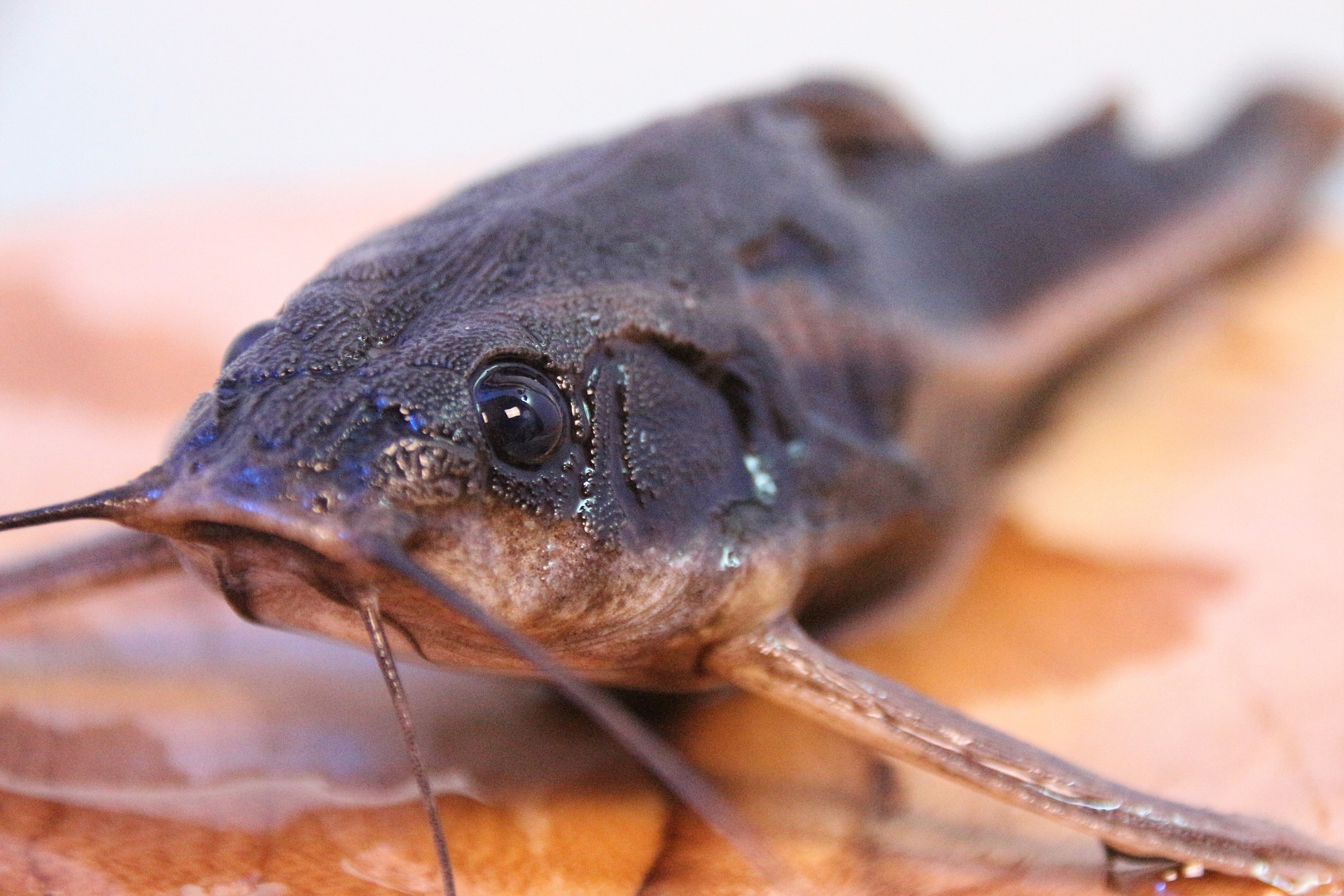


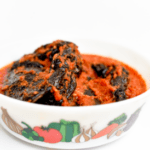

Why does Food and Adminsiration allow Swai to be sold in USA .
Hello Merlin,
I guess the simple reason would be that they do not have any reason not to.
We can all take solace from knowing that usually all products inspected and allowed into the US by the FDA adhere to the strict regulatory requirements otherwise they would not be allowed in.
I hope this helps.